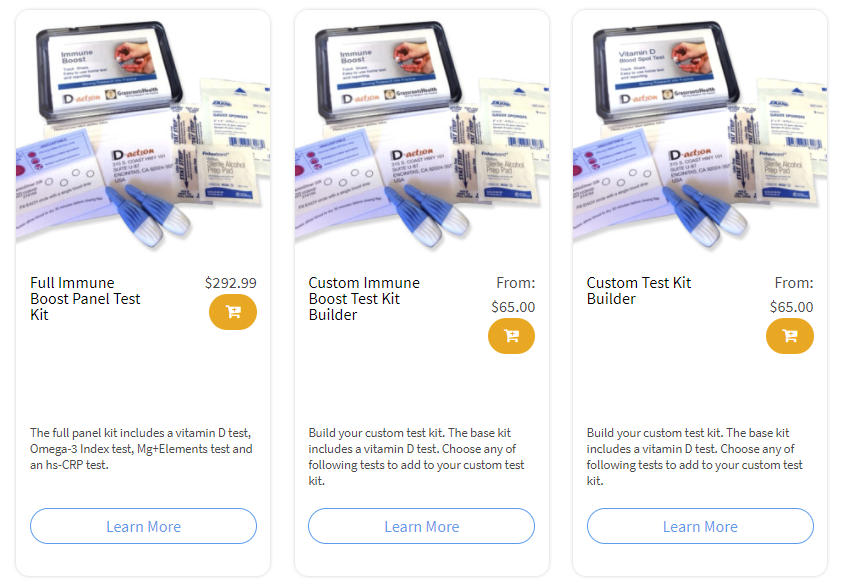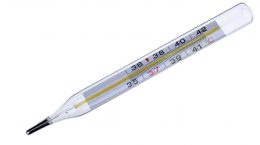Published on September 17, 2020
In a previous post we discussed the importance of the serving size amount and suggested use directions to ensure that you get the nutrients you expect from the supplements you are taking. We also previously looked at the information that is important on vitamin K labels. In today’s post we will look at the information on magnesium supplement labels.
What is Magnesium and Why is it Important?
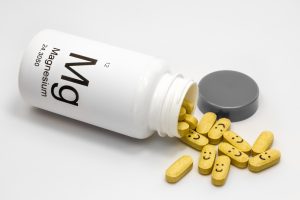 Magnesium is a mineral that is essential for many functions within the body including blood pressure regulation, bone health, and blood glucose control. Magnesium is a cofactor for hundreds of enzymes, including those involved in vitamin D activation. Magnesium is also needed for immune function playing roles in antigen binding, lymphocyte activation, and antibody production. Magnesium deficiency is common world-wide and low magnesium levels have been linked to atrial fibrillation (irregular heart rate), hypertension, cardiovascular disease, insulin resistance, type 2 diabetes, and migraines.
Magnesium is a mineral that is essential for many functions within the body including blood pressure regulation, bone health, and blood glucose control. Magnesium is a cofactor for hundreds of enzymes, including those involved in vitamin D activation. Magnesium is also needed for immune function playing roles in antigen binding, lymphocyte activation, and antibody production. Magnesium deficiency is common world-wide and low magnesium levels have been linked to atrial fibrillation (irregular heart rate), hypertension, cardiovascular disease, insulin resistance, type 2 diabetes, and migraines.
Magnesium is present naturally in many foods and drinks and added to food products. Food sources of magnesium include leafy green vegetables, nuts, whole grains, and milk products. It is also available as a supplement in multiple forms, such as magnesium chloride and magnesium oxide, and found in some medicines (e.g. antacids and laxatives).
How does magnesium appear on supplement labels?
In supplements (and in nature), magnesium is found in combination with other substances, such as a salt, because it is highly chemically active. Each combination provides a different amount of elemental magnesium and bioavailability.
Magnesium supplement labels report the amount of elemental magnesium in the product. However, the word “elemental” will not appear on the label, it will just say “magnesium.” The label may also report the weight of the entire magnesium-containing compound and may be listed on a separate line or in parentheses with the words “from” or “as” after the word “magnesium.” For example, on the sample label below, the amount of elemental magnesium is 145 mg whereas the amount of the magnesium-containing compound (Magnesium L-Theronate) is 2,000 mg. On the GrassrootsHealth questionnaire, we are looking for the amount of elemental magnesium only (145 mg in this example), not the compound (2,000 mg) nor a total of these two numbers (2,145 mg). We also ask about the form of magnesium in the supplement. In this case, Magnesium Threonate but it may be found in several different forms or types that have different characteristics and effects on the body.
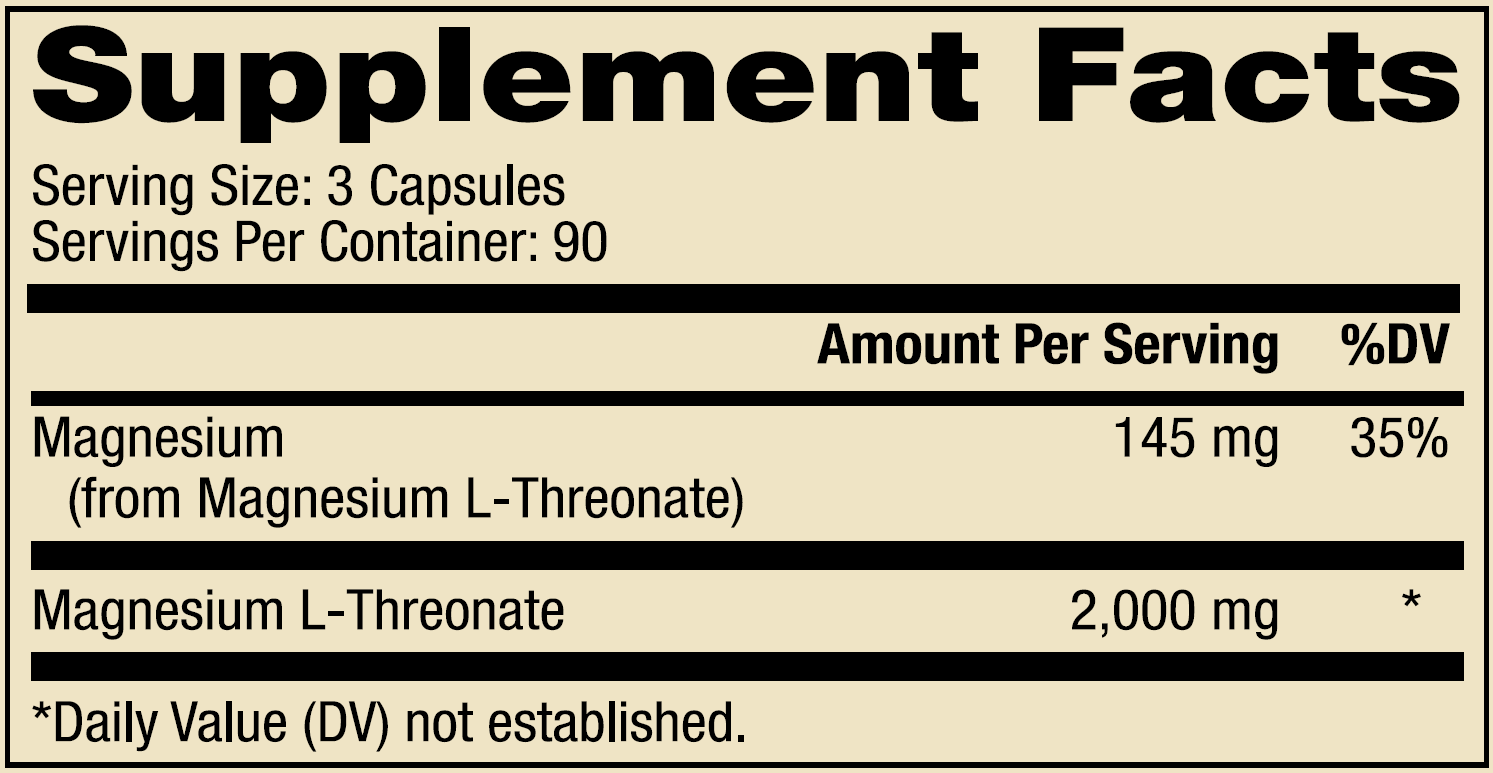
In most magnesium-specific supplements, the type of magnesium included will be readily apparent. In some supplements that contain magnesium, such as multivitamins, the type of magnesium may not be listed in the supplement facts list, but can usually be found in the ingredients list as seen below.

Among GrassrootsHealth participants who have previously reported their supplemental intake for magnesium, 68% report taking supplemental magnesium. We appreciate you taking the time to enter your supplemental magnesium intake in the questionnaire! Keep an eye out for more on this series on what information to look for on supplement labels.
Are You Getting Enough Magnesium and Other Nutrients Important for Immune Health?
Could getting more of certain nutrients help to decrease your levels of inflammation, and improve your immune response? Find out by testing your vitamin D, omega-3s, magnesium and other essential elements (including copper and zinc), as well as your inflammation levels, with the new Immune Boost home test kit offered by GrassrootsHealth. Measuring levels is the only way to know if you are supporting your immune system and whether additional changes should be made, with supplementation, dietary changes, or both.
Enroll now with the Full Immune Boost Panel (which includes tests for vitamin D, Omega-3 Index, magnesium, zinc, selenium, copper, and hsCRP), and get 10% off when you use coupon code BoostTen at checkout.
What Does it Take YOU to Get Your D to 40 ng/ml (100 nmol/L)?
Did you know your health could be greatly affected by making sure you have a vitamin D level of at least 40 ng/ml (100 nmol/L)? Help us help you.
STEP 1 – Do you know what your vitamin D level is? If not, be sure to test today to find out.
STEP 2 – Determine your target level. Are you at your target level? Experts recommend a level of at least 40-60 ng/ml (100-150 nmol/L).
STEP 3 – Need to boost your level? Use the D*calculator to see how much vitamin D it may take to reach your target. Opt for the Loading Dose for a quicker boost.
STEP 4 – Optimize how your body absorbs and utilizes vitamin D with co-nutrients and these simple steps.
STEP 5 – Re-Test! This is an important step to make sure you have reached your target level, and to ensure you are not taking too much! Re-testing after 3-4 months is recommended.
STEP 6 – Adjust, Repeat…
Give your immune system the nutrients it needs to support a healthy you and protect yourself from unnecessary diseases, especially COVID-19.
NEWS ALERT
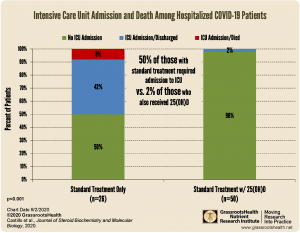 The first Randomized Controlled Trial on vitamin D and COVID-19 has shown a 96% lower risk of ICU admission for those receiving vitamin D (as 25(OH)D to quickly boost vitamin D blood levels) along with the standard treatment, compared to those receiving standard treatment alone.
The first Randomized Controlled Trial on vitamin D and COVID-19 has shown a 96% lower risk of ICU admission for those receiving vitamin D (as 25(OH)D to quickly boost vitamin D blood levels) along with the standard treatment, compared to those receiving standard treatment alone.
These results support many previous observational studies showing a relationship between vitamin D levels and intake and COVID-19 severity.
Review the Latest Nutrient Research for COVID-19
GrassrootsHealth Nutrient Research Institute has launched the new Immune Boost project with the use of our myData-myAnswers nutrient health system that nearly 15,000 people are already using for their health. Specific markers that influence immune health are suggested for testing as part of this project including:
- Vitamin D
- Omega-3 Index
- Essential elements magnesium, selenium, and zinc
- hsCRP
Our goal is to demonstrate how one can use the Nutrient Research Model established by Dr. Robert Heaney to show the effect of vitamin D serum levels of at least 40 ng/ml (100 nmol/L) on risk reduction for all ethnicities in the population. Status and intake of other nutrients will also be analyzed for any type of relationship to immune status and symptom severity. Join the project today!
Please let us know if you’re interested in helping sponsor this project.
CLICK HERE for updates and new information about the project.
Through GrassrootsHealth Nutrient Research Institute, you can also test your essential elements magnesium, copper, zinc and selenium, toxins such as lead, mercury and cadmium, as well as your omega-3 levels, inflammation levels and thyroid stimulating hormone (TSH) level. Find out your levels today! Log on to the test selection page (click the link below) to get your tests and see for yourself if your levels can be improved.
Make sure you track your results before and after, about every 6 months!
Click Here to Access the Test Page
How can I track my nutrient intake and levels over time?
To help you track your supplement use and nutrient levels, GrassrootsHealth has created the Personal Health Nutrient Decision System called
For each specific supplement, you can track what days you take it, how much, and many other details. This will help you know your true supplemental intake and what patterns of use work for you to reach and maintain optimum nutrient levels. Check it out today!



